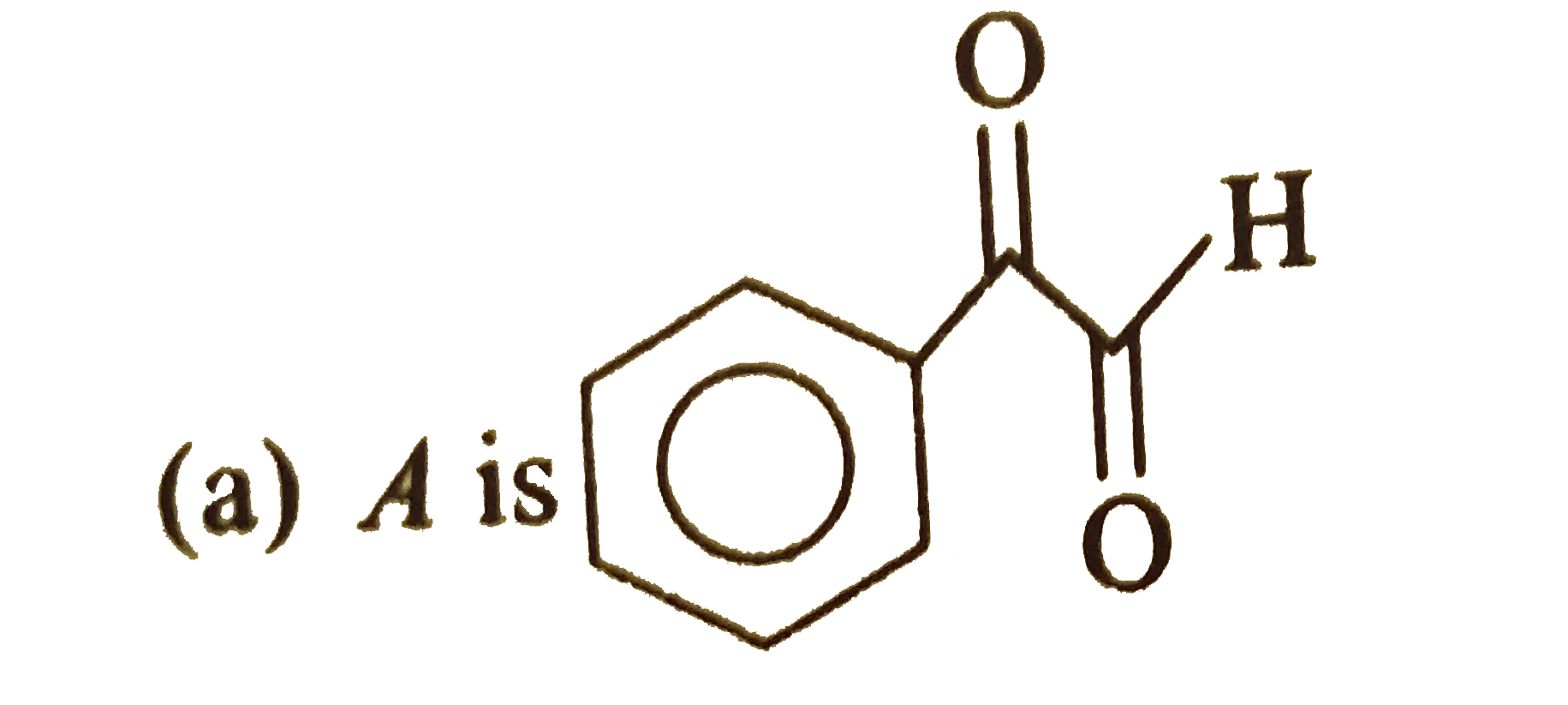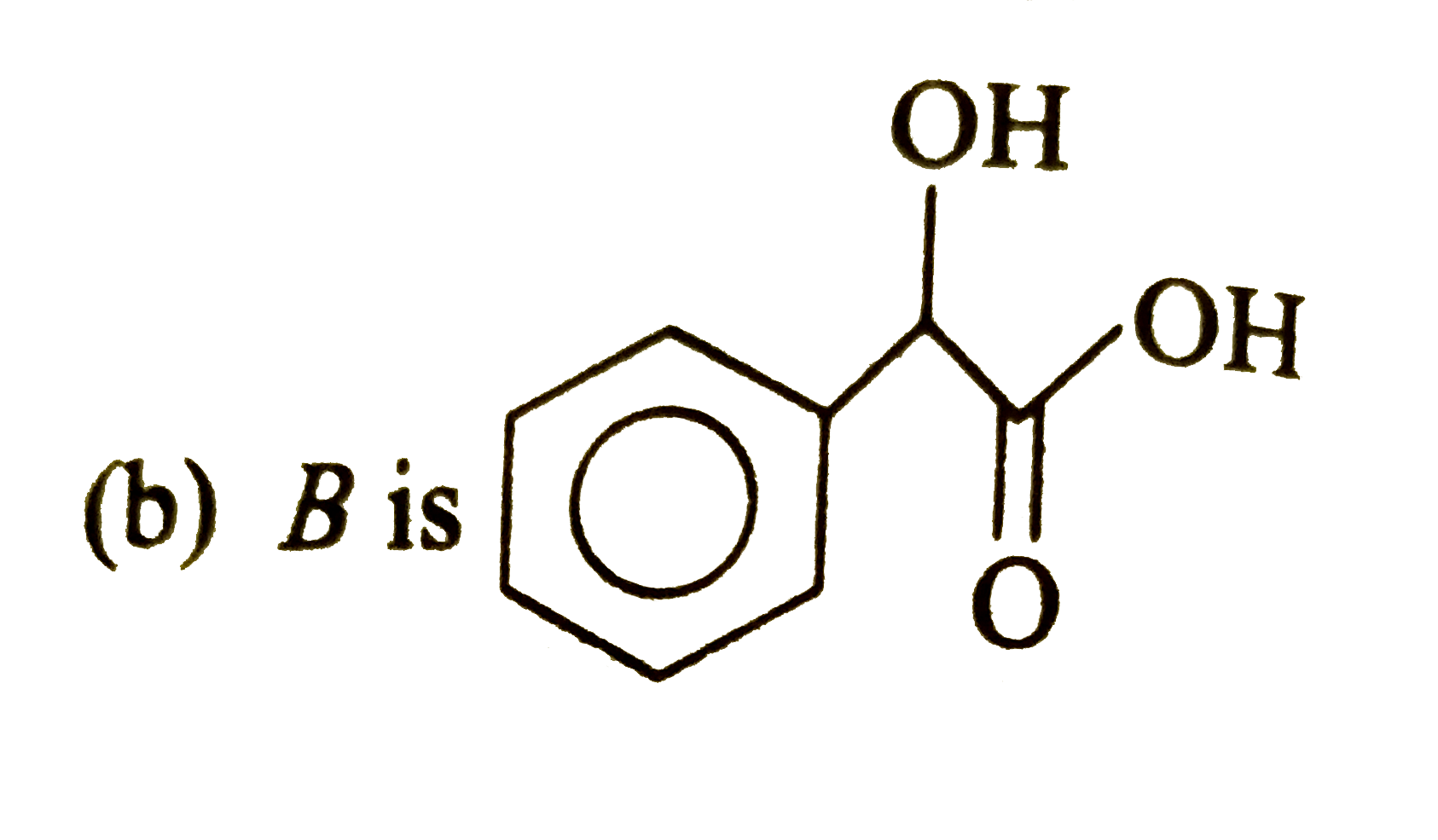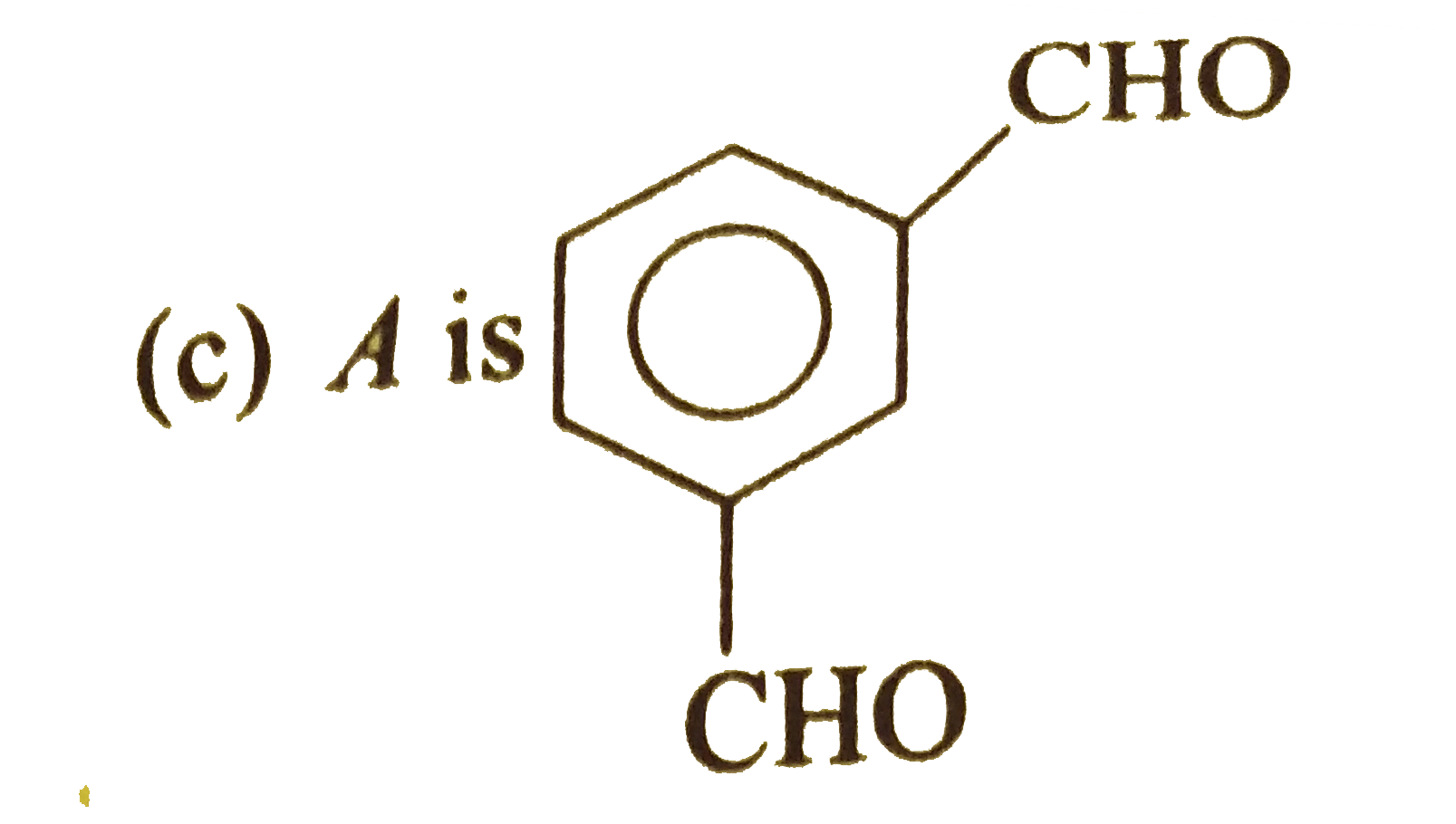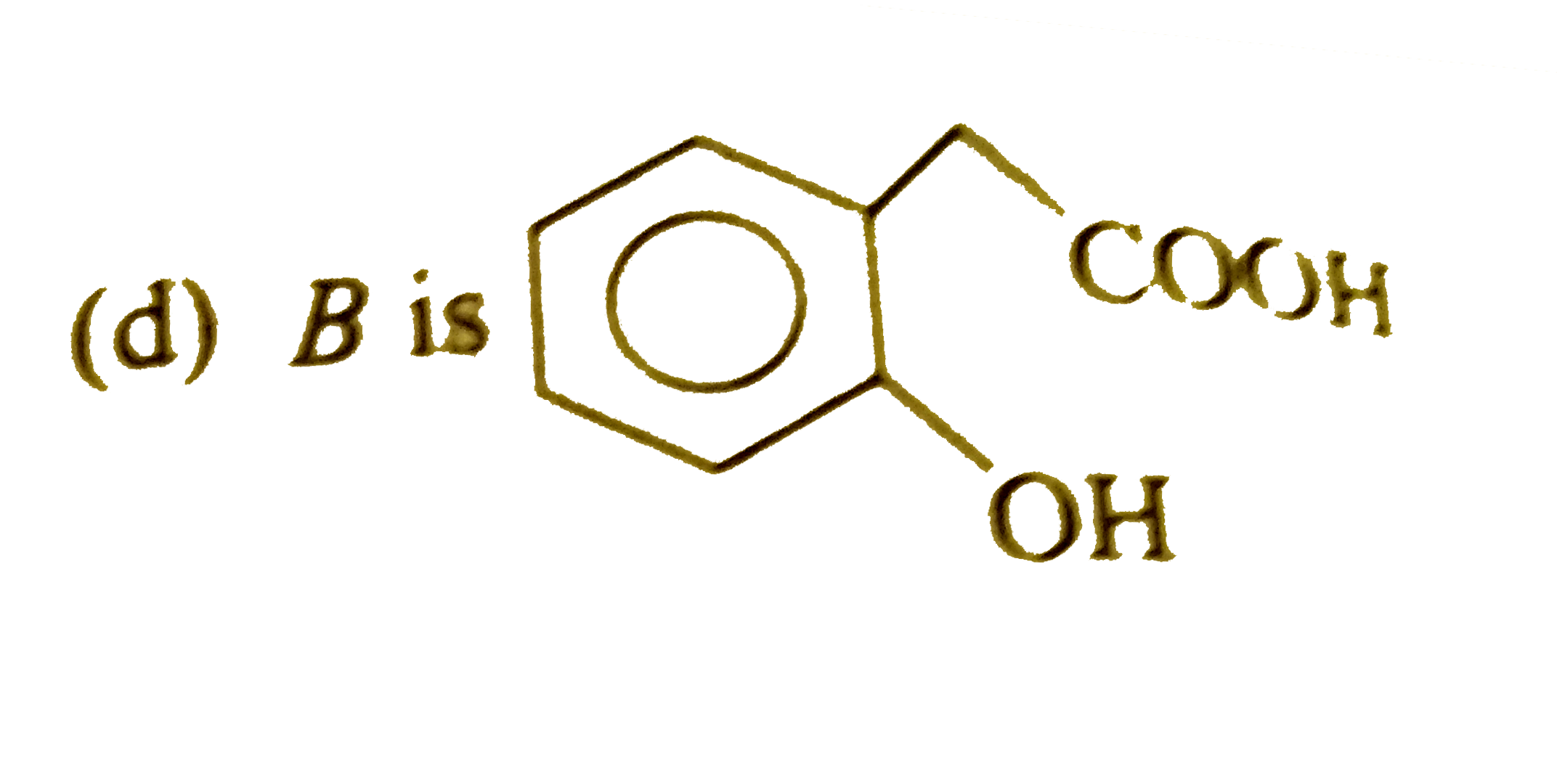An organic compound (A) C3H8O answers Lucas test within 5-10 minutes andon oxidation forms B (C3H6O). This on further oxidation forms C(C2H4O2) which gives effevescence with Na2CO3 also undergoes iodoform reaction. Identify A, B, and C. Explain the conversion of A to B and C.
(i) Isopropyl alcohol (A).
(ii) (B) on oxidation gives (B).
CH3−CH−CH2∣OH(A)O−−→C∣∣O(B)−CH3
(B) on further oxidation gives (C ) which gives brisk efferescence with Na2CO3.
CH3−C∣∣OB−CH3+I2+KOH→CHI3+CH3COOH

Topper's Solved these Questions
- HYDROXY COMPOUNDS AND ETHERS BOOK - SURA PUBLICATIONCHAPTER - HYDROXY COMPOUNDS AND ETHERS EXERCISE - HOTS
4 Videos
- HYDROXY COMPOUNDS AND ETHERS BOOK - SURA PUBLICATIONCHAPTER - HYDROXY COMPOUNDS AND ETHERS EXERCISE - UNIT TEST (CHOOSE THE CORRECT ANSWERS)
5 Videos
- HYDROXY COMPOUNDS AND ETHERS BOOK - SURA PUBLICATIONCHAPTER - HYDROXY COMPOUNDS AND ETHERS EXERCISE - LONG ANSWERS
11 Videos
- GOVT. MODEL QUESTION PAPER - 2019-2020 BOOK - SURA PUBLICATIONCHAPTER - GOVT. MODEL QUESTION PAPER - 2019-2020 EXERCISE - Part_IV
10 Videos
- IONIC EQUILIBRIUMBOOK - SURA PUBLICATIONCHAPTER - IONIC EQUILIBRIUMEXERCISE - EXERCISE (LOGN ANSWER)
1 Videos
Similar Questions
An organic compound 'A'(C4H10O) is optically active. On mild oxidation, it gives a compound 'B'(C4H8O) but upon vigorous oxidation, it gives another compound 'C'(C3H6O2). The compound 'C' along with 'D' are also formed from 'B' by reacting with iodine in the presence of alkali. Deduce the structures of 'A','B','C' and 'D'.
View SolutionAn organic compound 'A'(C4H10O) is optically active. On mild oxidation, it gives a compound 'B'(C4H8O) but upon vigorous oxidation, it gives another compound 'C'(C3H6O2). The compound 'C' along with 'D' are also formed from 'B' by reacting with iodine in the presence of alkali. Deduce the structures of 'A','B','C' and 'D'.
View Solution
Knowledge Check
The compound X(C3H6O) on oxidation gives a compound Y(C3H6O2) . The compound Y is
Apropanoic acidBbutyric acidCacetic acidDpropenoic acidCompound 'A' with the formula C3H8O on vigorous oxidation produces an acid C3H6O2. 'A' is
Aa tertiary alcoholBa secondary alcoholCa primary alcoholDnot necessarily an alcoholCompound (A) C8H6O2 on treatment with aq. NaOH followed by acidification gives (B) C8H8O3 which on oxidation gives benzoice acid only :
A B
B C
C D
D
An organic compound A (C7H6Cl2) on treatment with NaOH solution gives another compound B (C7H6O). B on oxidation gives and acid C (C7H6O2) which on treatment with a mixture of conc. HNO3 and H2SO4 gives a compound D (C7H5NO4). B on treatment with conc. NaOH gives a compound E (C7H8O) and C6H5COONa. Deduce the structures of [A], [B], [C], [D] and [E].
View SolutionAn organic compound (A) containing 60.12% (C ) and 13.3% H has vapour density of 30. On oxidation it gives (B) (C3H6O) which on further oxidation by NaOH and I2 gives compound (C ) (C2H3O2Na). When (B) is treated with hydroxylamine, a compound (D) (C3H7NO) is formed. what are (A), (B), (C ) and (D) ?
View SolutionAn organic compound (A) containing 60.12% (C ) and 13.3% H has vapour density of 30. On oxidation it gives (B) (C3H6O) which on further oxidation by NaOH and I2 gives compound (C ) (C2H3O2Na). When (B) is treated with hydroxylamine, a compound (D) (C3H7NO) is formed. what are (A), (B), (C ) and (D) ?
View SolutionAn organic compound A(C3H6O)is resistant to oxidation but forms compound B(C3H8O) on reduction which reacts with HBr to form the bromide (C). C forms a Grignard reagent which reacts with A to give D(C6H14O). Give the structures of A, B, C and D and explain the reactions involved.
View SolutionAn organic compound (A) of molecular formula C5H8 when treated with Na in liquid ammonia followed by reaction with s-Propyl iodide yeidls (B) C8H12 (A) gives a ketone C5H10O (e) when treated with dil H2SO4 and HgSO4 (B) on oxidation with alkaline KMnO4 gives two isomeric acids (D) and (E) C4H8O2. Give structures of compounds (A) to (E) with proper reasoning .
View Solution
